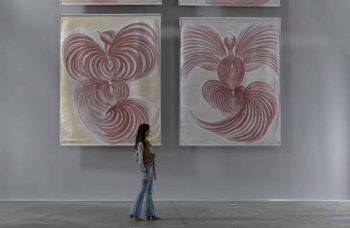Most everyone agrees that the arts better society. Whether you’re an engineer or teacher, curator or banker, by and large there is some part of the arts that appeal to everyone. Funding for the arts, however, can be tricky. While many see its benefits, it’s difficult to scrape up the necessary funds on a local or national level to keep the arts and arts programmes going. In 2018, President Trump considered cutting funding the National Endowment for the Arts (NEA) among other cultural agencies but in the end, the budget he and the US Congress passed spared it.
A new report based on the US, though, puts the impact of the arts on the nation’s economy in black and white. Created as a joint report between the US Bureau of Economic Analysis (BEA) and the NEA the report found that in 2015 (the most recent year with available figures) the arts contributed a whopping $763.6 billion to the US economy. That was more than warehousing, transportation, or even agriculture for the same year. In fact, agriculture was responsible for about a quarter of what the arts generated. Countrywide, 4.9 million Americans were employed by arts-related organizations and earned, collectively, $370 billion. The arts also resulted in a positive trade balance exporting $20 billion more than they imported.
The report is part of the Arts and Cultural Production Satellite Account (ACSPA) created by the NEA and BEA. The ACSPA now tracks the impact of the arts and culture from 35 commercial and non-profit industries. The ACSPA does offer a broad definition for the arts to include the manufacturing of jewellery, film, and TV production. In total, the ACSPA found that revenue from the arts accounted for 4.2% of the US’s gross domestic product (GDP). The arts also saw a positive trend from 2012 to 2015 with a 2.6% growth rate, which was slightly higher than the national economic growth rate of 2.4% for the same period of time.
The ACSPA report included state-by-state statistics for the first ever showing the impact of the arts on each US state. South Carolina, considered a rural state and home to another study’s number one unusual art city – Charleston, for example, added $4.9 billion to the economy and the arts employed over 50,000 people. Massachusetts was 73% higher than the national average concerning architectural services bringing in $804.6 million. Somewhat surprisingly, Louisiana was only out-performed by California and New York in revenue generated from movie production.
‘The robust data present in the Arts and Cultural Production Satellite Account show through hard evidence how and where arts and culture contribute value to the economies of communities throughout the nation,’ said NEA Chairman Jane Chu in a statement. ‘The data confirm that the arts play a meaningful role in our daily lives, including through the jobs we have, the products we purchase, and the experiences we share.’





